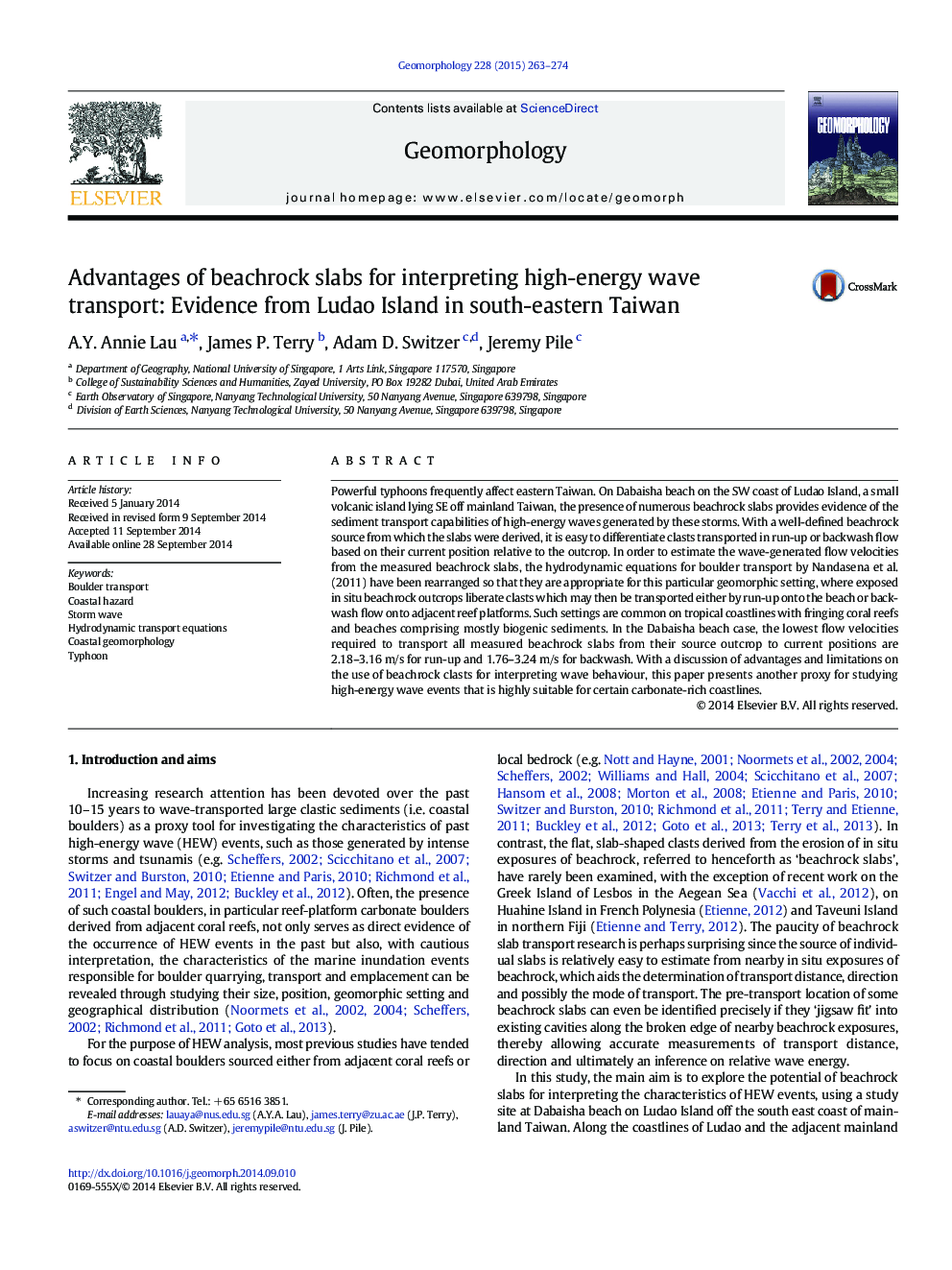| Article ID | Journal | Published Year | Pages | File Type |
|---|---|---|---|---|
| 6432266 | Geomorphology | 2015 | 12 Pages |
â¢Wave-transported beachrock slabs were derived from known source.â¢They allow assessment of run-up vs. backwash characteristics of storms or tsunamis.â¢Hydrodynamic equations were rearranged to estimate flow velocity from slabs.â¢This method was applied to study wave characteristics on a beach of Ludao, Taiwan.
Powerful typhoons frequently affect eastern Taiwan. On Dabaisha beach on the SW coast of Ludao Island, a small volcanic island lying SE off mainland Taiwan, the presence of numerous beachrock slabs provides evidence of the sediment transport capabilities of high-energy waves generated by these storms. With a well-defined beachrock source from which the slabs were derived, it is easy to differentiate clasts transported in run-up or backwash flow based on their current position relative to the outcrop. In order to estimate the wave-generated flow velocities from the measured beachrock slabs, the hydrodynamic equations for boulder transport by Nandasena et al. (2011) have been rearranged so that they are appropriate for this particular geomorphic setting, where exposed in situ beachrock outcrops liberate clasts which may then be transported either by run-up onto the beach or backwash flow onto adjacent reef platforms. Such settings are common on tropical coastlines with fringing coral reefs and beaches comprising mostly biogenic sediments. In the Dabaisha beach case, the lowest flow velocities required to transport all measured beachrock slabs from their source outcrop to current positions are 2.18-3.16Â m/s for run-up and 1.76-3.24Â m/s for backwash. With a discussion of advantages and limitations on the use of beachrock clasts for interpreting wave behaviour, this paper presents another proxy for studying high-energy wave events that is highly suitable for certain carbonate-rich coastlines.
